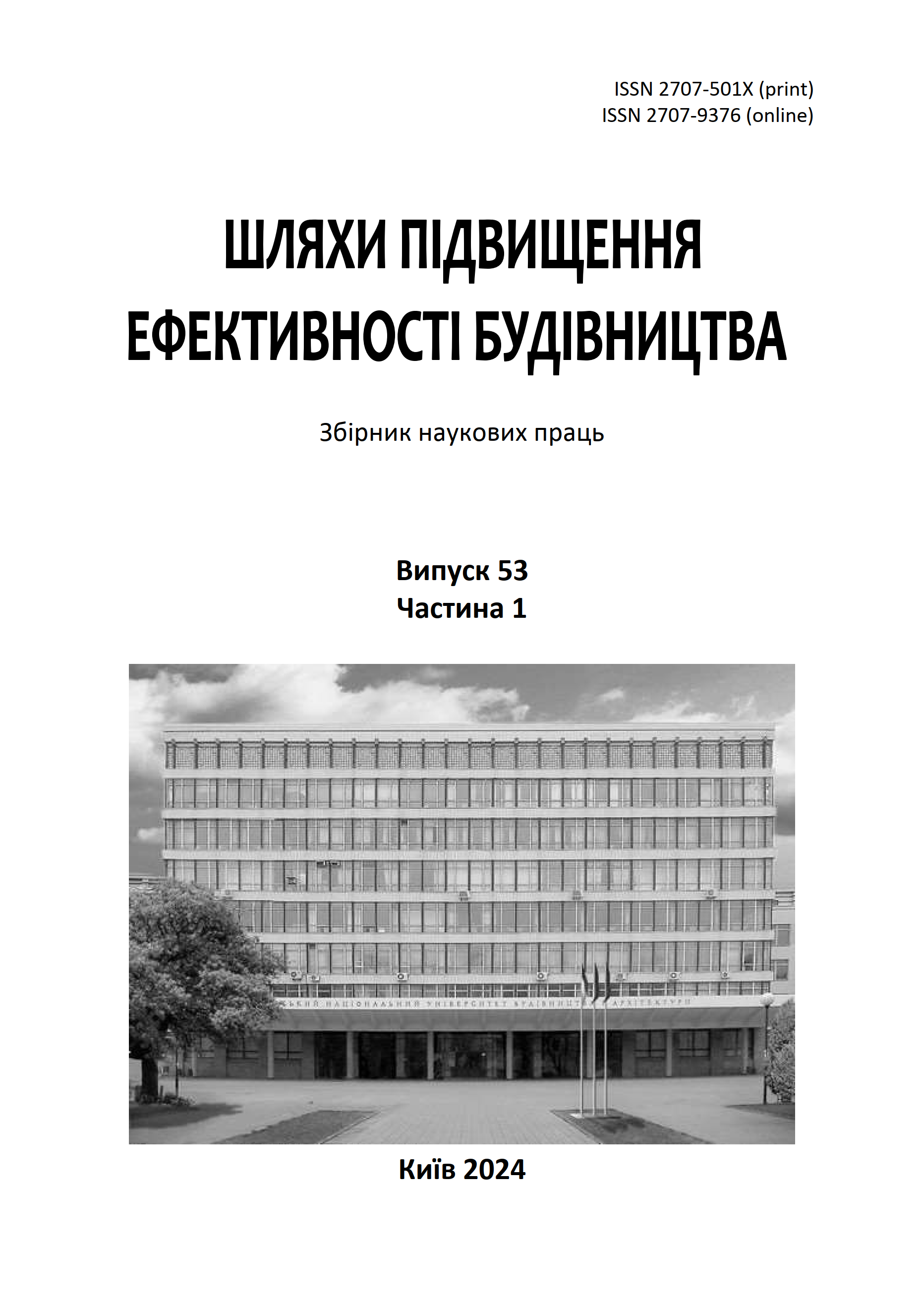Public-Private Partnership as a tool for crisis management in the construction industry
DOI:
https://doi.org/10.32347/2707-501x.2024.53(1).163-173Keywords:
public-private partnership, construction enterprise, regulatory framework, crisis management, risk, risk factorsAbstract
Public-private partnerships (PPPs) are becoming an increasingly important tool for infrastructure development, improving the quality of public services, and stimulating economic growth in Ukraine. The article analyzes the current state of PPP in Ukraine, identifies the main problems, proposes elements of crisis management, and outlines the prospects for the development of PPP in the future. The types and terminology of PPP contracts are studied. The main characteristics of PPPs in Ukraine are provided, including: duration of contracts: 20-30 years, which provides an incentive for the private party to take into account the costs of providing services at the stage of project development; types of projects, responsibilities of the private party; payment mechanism. A key feature of PPPs is that the assets or services provided are defined in terms of outcomes rather than inputs, i.e., they define what is needed rather than how to do it. The analysis of PPPs in Ukraine proved that there are a number of problems that complicate the implementation of PPP projects. The main ones are the imperfection of legislation, the lack of clear mechanisms for distributing risks, bureaucracy and corruption. During 2010-2023, Ukraine adopted a number of regulations governing public-private partnerships (PPPs) and concessions. The periods of active legislative regulation were 2010-2011 and 2019-2023. Regulations play an important role in minimizing risks and effective crisis management in this area. It is noted that there is a limited number of effective mechanisms for distributing risks between the State and private investors, which leads to the shift of the main burden to one of the parties, which reduces the attractiveness of PPPs for investors. Studies show that only 35% of PPP projects in the construction industry have adequate risk-sharing mechanisms. the structure and possible consequences of the main risks that public-private partnership (PPP) projects may face in different phases of their implementation are provided. It is recommended to take into account their importance when allocating risks. It is proved that in practice a qualitative approach to assessment is used more often. Public-private partnership is a powerful tool for infrastructure development and crisis management in the construction industry. However, for its successful implementation, it is necessary to improve the regulatory framework, increase institutional capacity and ensure transparency of processes.
References
Adu Gyamfi, T., Aigbavboa, C.O. and Thwala, W.D. (2022), "Risk resources management influence on public–private partnership risk management in construction industry. Confirmatory factor analysis approach", Journal of Engineering, Design and Technology, Vol. ahead-of-print No. ahead-of-print. https://doi.org/10.1108/JEDT-12-2021-0699
Петренко Г., Гриненко І., Ніколаєв Г., Петруха Н., Рижакова Г., Рогач К. (2022). Визначення загальносистемних детермінант динамічного розвитку будівельних підприємств у концептах комплаєнс- та ризик-менеджменту. Управління розвитком складних систем, (49), 105–112. https://doi.org/10.32347/2412-9933.2022.49.105-112
Krupka, M., & Kostetskyі V. (2023). The influence of public-private partnership on strengthening the financial security of business entities. Herald of Economics, 1, 35-49. https://doi.org/10.35774/visnyk2023.01.035.
Ampratwum, G., Tam, V.W.Y. and Osei-Kyei, R. (2023), "Critical analysis of risks factors in using public-private partnership in building critical infrastructure resilience: a systematic review", Construction Innovation, Vol. 23 No. 2, pp. 360-382. https://doi.org/10.1108/CI-10-2021-0182
Міністерство економіки України. URL: https://www.me.gov.ua/Documents/Detail?lang=uk-UA&id=9fc90c5e-2f7b-44b2-8bf1-1ffb7ee1be26&title=StanZdiisnenniaDppVUkraini
Про державно-приватне партнерство : Закон України від 01.07.2010 р. № 2404-VI : станом на 3 верес. 2023 р. URL: https://zakon.rada.gov.ua/laws/show/2404-17#Text
Деякі питання організації здійснення державно-приватного партнерства : Постанова Каб. Міністрів України від 11.04.2011 р. № 384 : станом на 1 верес. 2021 р. URL: https://zakon.rada.gov.ua/laws/show/384-2011-п#Text
Про затвердження Методики виявлення ризиків здійснення державно-приватного партнерства, їх оцінки та визначення форми управління ними : Постанова Каб. Міністрів України від 16.02.2011 р. № 232 : станом на 30 верес. 2015 р. URL: https://zakon.rada.gov.ua/laws/show/232-2011-п#Text
Про затвердження Порядку прийняття рішення про надання державної підтримки здійснення державно-приватного партнерства : Постанова Каб. Міністрів України від 08.02.2023 р. № 117. URL: https://zakon.rada.gov.ua/laws/show/117-2023-п#Text
Koval, V., Gonchar, V., Udovychenko, V., Kalinin, O., Slobodianiuk, O., & Soloviova, O. (2023). Risk management analysis of environmental investment in economic security. Journal of Geology, Geography and Geoecology, 32(3), 540-549. https://doi.org/https://doi.org/10.15421/112348
Downloads
Published
How to Cite
Issue
Section
License

This work is licensed under a Creative Commons Attribution 4.0 International License.
Authors who publish with this journal agree to the following terms:
- Authors retain copyright and grant the journal right of first publication with the work simultaneously licensed under a Creative Commons Attribution License that allows others to share the work with an acknowledgement of the work's authorship and initial publication in this journal.
- Authors are able to enter into separate, additional contractual arrangements for the non-exclusive distribution of the journal's published version of the work (e.g., post it to an institutional repository or publish it in a book), with an acknowledgement of its initial publication in this journal.
- Authors are permitted and encouraged to post their work online (e.g., in institutional repositories or on their website) prior to and during the submission process, as it can lead to productive exchanges, as well as earlier and greater citation of published work (See The Effect of Open Access).

